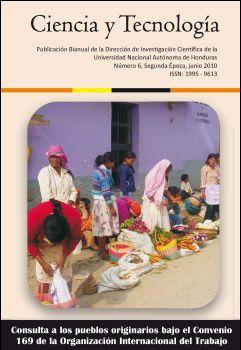Sistema SCADA UNAH para eficiencia energética
DOI:
https://doi.org/10.5377/rct.v0i6.514Palabras clave:
SCADA, Automatización, Redes y Protocolos de comunicación, Control Remoto, Informática de Sistemas de Automatización y ControlResumen
Un sistema SCADA es una aplicación de software especializada para funcionar sobre computadoras y dispositivos de campo, para el monitoreo y control de cualquier sistema o instalación a distancia; es por esta razón que se presenta una propuesta para la implementación de un sistema SCADA en la UNAH, la que tiene como principal objetivo reducir los costos en la factura por consumo de energía eléctrica, ya que la universidad actualmente cuenta con un alto consumo energético. Además la misma universidad dispone de un anillo de fibra óptica que está presente en los predios universitarios, (donde el ente responsable del manejo de dicha red es la Dirección Ejecutiva de Gestión de Tecnología DEGT) el cual reduce los costos de manera importante; es una razón de vital importancia para llevar a cabo este proyecto.
El sistema SCADA, nos permitirá monitorear y controlar los dispositivos instalados (Tarjeta de adquisición de datos, PC, PLC, y los diferentes sensores de movimiento y capacitivos), donde éstos a su vez se interconectan a la Red VLAN por medio de un Switch, y con los demás edificios a través del anillo de fibra óptica, el cual tiene su servidor principal.
Es importante hacer mención que la misma Investigación nos llevó a realizar un prototipo de SCADA REAL de bajo costo, para lograr evidenciar el funcionamiento de este tipo de sistema y demostrar que es posible aplicarlo a la UNAH. El Prototipo fue desarrollado utilizando una tarjeta de Adquisición de Datos, Proyect Board, y dispositivos electrónicos, realizando la toma de datos del mundo real y el control de estas variables físicas a través de computadoras remotas por medio de una red de comunicación Wireless, simulando una Red LAN TCP/IP. El proyecto y el prototipo fueron presentados oralmente en la clase de Seminario de investigación y de forma muy especial también a la DEGT, donde se formuló la implementación del SCADA arrancando con un edificio piloto para la elaboración y desarrollo del sistema para llevarlo a toda la UNAH.
El plan de inversión para los 25 edificios de alto consumo de energía eléctrica de la UNAH, es de L. 3 903,743.75, donde los fondos podrían ser adquiridos de la 1 siguiente forma: 30 % fondos propios o provenientes de fuentes externas, L.1 171,123.13 y un 70 % financiado por una o varias entidades financieras 1 L.2 732,620.63. Estas inversiones incluyen mobiliario, software y hardware 1 únicamente. Los costos pueden variar considerando, que mucho equipo de Red ya lo posee la DEGT, por ello es importante que el detalle de estos mismos los brinde la DEGT y sea ella misma la que defina el costo final.
En las condiciones en que se plantea el proyecto, nos permite recuperar la inversión en un año y seis meses como se muestra de forma paralela la relación que existe entre el beneficio y el costo de la implementación del proyecto, ya que el beneficio es muy rentable para más de cinco años. Ver Fig.8
Debido a la magnitud del proyecto es sumamente importante contratar a un profesional de la ingeniería que labore en la DEGT con dedicación exclusiva, con amplios conocimientos de electricidad, software, autómatas y Redes, otorgándole facultades suficientes para coordinar y gestionar la implementación y desarrollo de este proyecto y de los restantes proyectos de ahorro energético en los edificios de la UNAH. De implementarse el proyecto de forma completa, el ahorro económico que tendría la UNAH seria de más de un millón de lempiras anualmente con tan sólo disminuir una hora de iluminación diaria.
Palabras Clave: SCADA; Automatización; Redes y Protocolos de comunicación; Control Remoto; Informática de Sistemas de Automatización y Control.
DOI: http://dx.doi.org/10.5377/rct.v0i6.514
Revista Ciencia y Tecnología, No. 6, Segunda época, junio 2010: 97-109
Descargas
2972
Descargas
Cómo citar
Número
Sección
Licencia
© Revista Ciencia y Tecnología
Este obra está bajo una licencia de Creative Commons Reconocimiento-NoComercial 4.0 Internacional.

Usted está en libertad de:
- Compartir:copiar y redistribuir el material en cualquier medio o formato
- Adaptar:remezclar, transformar y crear a partir del material
Bajo las siguientes condiciones:
- Reconocimiento: Usted debe darle crédito a esta obra de manera adecuada, proporcionando un enlace a la licencia, e indicando si se han realizado cambios. Puede hacerlo en cualquier forma razonable, pero no de forma tal que sugiera que usted o su uso tienen el apoyo del licenciante.
- Uso no comercial: Usted no puede hacer uso del material con fines comerciales.




